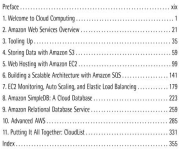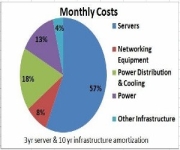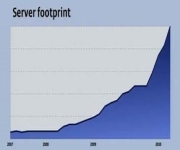Archive For The “Services” Category
What happens when you really, really, focus on efficient infrastructure and driving down costs while delivering a highly available, high performance service? Well, it works. Costs really do fall and the savings can be passed on to customers. AWS prices have been falling for years but this is different. Its now possible to offer an…

Long time Amazon Web Services Alum Jeff Barr has written a book on AWS. Jeff’s been with AWS since the very early days and he knows the services well. The new book Host Your Web Site in the Cloud: Amazon Web Services Made Easy, covers each of the major AWS services, how to write code…
This morning I came across an article written by Sid Anand, an architect at Netflix that is super interesting. I liked it for two reasons: 1) it talks about the move of substantial portions of a high-scale web site to the cloud, some of how it was done, and why it was done, and 2)…
Hosting multiple MySQL engines with MySQL Replication between them is a common design pattern for scaling read-heavy MySQL workloads. As with all scaling techniques, there are workloads for which it works very well but there are also potential issues that need to be understood. In this case, all write traffic is directed to the primary…

A couple of years ago, I did a detailed look at where the costs are in a modern , high-scale data center. The primary motivation behind bringing all the costs together was to understand where the problems are and find those easiest to address. Predictably, when I first brought these numbers together, a few data…

You can now run an EC2 instance 24×7 for under $15/month with the announcement last night of the Micro instance type. The Micro includes 613 MB of RAM and can burst for short periods up to 2 EC2 Compute Units(One EC2 Compute Unit equals 1.0-1.2 GHz 2007 Opteron or 2007 Xeon processor). They are available…

High Performance Computing (HPC) is defined by Wikipedia as: High-performance computing (HPC) uses supercomputers and computer clusters to solve advanced computation problems. Today, computer systems approaching the teraflops-region are counted as HPC-computers. The term is most commonly associated with computing used for scientific research or computational science. A related term, high-performance technical computing (HPTC), generally…
I didn’t attend the Hadoop Summit this year or last but was at the inaugural event back in 2008 and it was excellent. This year, the Hadoop Summit 2010 was held June 29 again in Santa Clara. This agenda for the 2010 event is at: Hadoop Summit 2010 Agenda. Since I wasn’t able to be…
I did a talk at Velocity 2010 last week. The slides are posted at Datacenter Infrastructure Innovation and the video is available at Velocity 2010 Keynote. Urs Holze Google Senior VP of infrastructure also did a Velocity keynote. It was an excellent talk and is posted at Urs Holzle at Velocity 2010. Jonathan Heilliger, Facebook…

Last week, I estimated that Facebook now had 50,000 servers in Facebook Software Use. Rich Miller of Datacenter Knowledge actually managed to sleuth out the accurate server count in: Facebook Server Count: 60,000 or more. He took Tom Cook’s Velocity 2010 talk from last week that showed growth without absolute numbers. But Rich noticed it…
The NoSQL movement continues to gain momentum. I don’t see these systems as replacing relational systems for all applications but it is also crystal clear that relational systems are a poor choice for some workloads. See One Size Does Not Fit All for my take on the different types of systems that make up the…
This morning I came across Exploring the software behind Facebook, the World’s Largest Site. The article doesn’t introduce new data not previously reported but it’s a good summary of the software used by Facebook and the current scale of the social networking site: · 570 billion page views monthly · 3 billion photo uploads monthly…
One of the most important attributes needed in a cloud solution is what I call cloud data freedom. Having the ability to move data out of the cloud quickly, efficiently, cheaply, and without restriction is a mandatory prerequisite in my opinion to trusting a cloud. In fact, you need the ability to move the data…
Last month I wrote about Solving World Problems with Economic Incentives. In that post I talked about the power of economic incentives when compared to regulatory body intervention. I’m not really against laws and regulations – the EPA, for example, has done some good work and much of what they do has improved the situation….
Industry trends come and go. The ones that stay with us and have lasting impact are those that fundamentally change the cost equation. Public clouds clearly pass this test. The potential savings approach 10x and, in cost sensitive industries, those that move to the cloud fastest will have a substantial cost advantage over those that…
I did a talk at the Usenix Tech conference last year, Where does the Power Go in High Scale Data Centers. After the talk I got into a more detailed discussion with many folks from Netflix and Canada’s Research in Motion, the maker of the Blackberry. The discussion ended up in a long lunch over…